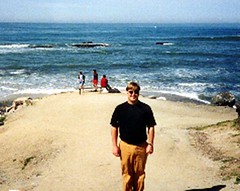Back then I wrote an extended and intricate analysis of the Preface to Burton's Anatomy of Melancholy (162) Surely you know it "Democritus Jr. to the Reader"? A classic case of self fashioning, self-consumptions and several forms of self abuse rolled into one tight prose ball. Yes, I basically re-created Stanley Fish's classic text on same, Self-Consuming Artifacts, which I only discovered after the paper had been returned. Herschel Baker, no slave to fashion, was kind enough not to tell me what he REALLY thought of such conceits at one of our frequent meetings in his smoky Widener carrel. I suspect he and Stan the Man must have had some titanic intellectual brawls over Milton back in the day! But then everybody forgets Fish's first book was a rather straightforward reading of John Skelton's oeuvre: John Skelton's Poetry (New Haven: Yale UP, 1965). Even the master of misdirection himself admits the banality of said book, or at least its title:
Ever since my first book, “John Skelton’s Poetry,” was misclassified by Books in Print as an edition, I have tried to come up with titles that announced (sometimes in words that were too clever by half) that the content between the covers was original and even outlandish. I think I got pretty good at it — “There’s No Such Thing As Free Speech and It’s a Good Thing Too,” “Self-Consuming Artifacts,” “Professional Correctness,” “Is There a Text in This Class?” — but I can’t hold a candle to the headline writers of the New York Post.There I go again just like the titular Don Juan off topic and away . . .
—Stanley Fish, "Headline Art," The New York Times April 19, 2009.
So back to the harem or at least, a contained space about/in which we can think about the meaning of the concept of "scene."
When speaking of scenes I think of metaphorical homes: musical ones, social ones, spaces and places. But we must remember after Bachelard that the scene as home is nothing but a substitute, a kind of home while still not a home. Because eventually every one leaves the scene whether for the next one, death, a new life in suburbia, or some other conversion experience.
Why are scenes so important to emergent music? And in many ways even more so to residual tones? Raymond Williams would alert us to the fact that as a dominant cultural form, certain musics don't NEED scenes to survive. they have late modern capitalism and all its inherent self-replicating systems and yet the digital bug has gotten inside the analog world and basically crushed it. Kind of like a post-modern Boll Weevil. Newspapers dead and dying, music magazines closing left and right and/or shrinking and "Re-Positioning themselves with the marketplace." A&R types running scared shitless any which way they can trying to figure a doable fiscal model for the 21st century music "industry."
That's at least a start. I want to riff with Simon on Jameson re: time and place. But like many a long jam I've gotten to the bridge on Part 1. Part 2 on the flipside.

No comments:
Post a Comment